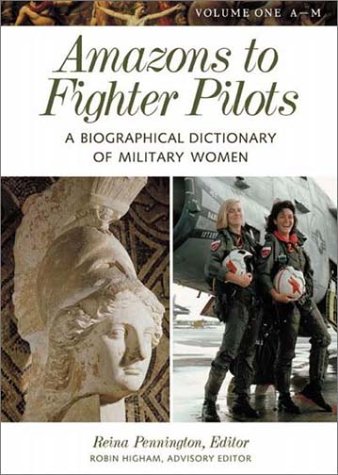
Amazons to Fighter Pilots: A Biographical Dictionary of Military Women
Publisher: Greenwood
ISBN: 0313291977
Publication date: 2003
In 1942, during the battle of Stalingrad, fighter pilot Liliia Litviak became the first woman to shoot down an enemy aircraft. In the 1850s, Lakshmi Bai, a horsewoman, good shot, and Rani of the Indian principality of Jhansi, rallied her subjects and defended the principality against a British siege. From antiquity to the present, thousands of women have served in the military as soldiers, sailors, physicians, and pilots, yet their stories have been hidden from history. This book tells their stories, with particular focus on women who fought.
Entries profile over 300 remarkable women of the military, covering such groups as the Amazons, women in the Spanish Civil War, and Native Americans. The full sweep of their experience is contextualized through an extensive timeline and introductory survey. Additional tidbits–quotations, statistics, information on women and war–appear in sidebars throughout the text. Lists grouping entries by geographical regions, time periods, and branch of service serve as finding aids for researchers, making this a unique resource for students, scholars, and the general reader.
“
“This peerless work, situated at the nexus of military history and women’s studies, is an essential… Highly recommended. ”
Choice
“
“This two-volume biographical dictionary is one of the first to celebrate women specifically in active military roles. . . . This book stands apart because of its scholarly approach and particular attention paid to women in combat roles”
Feminist Collections
“
“This beautifully illustrated two-volume work may be the most important encyclopedia ever written in the field of women and war. . . . When future historians discern the point at which the study of women and war reached a critical mass, they may conclude that the publication of Amazons to Fighter Pilots marks the dividing point between an era when military women were ignored as irrelevant and one in which historians can no longer ignore their contributions. . . . It will be an invaluable resource for decades to come.”
